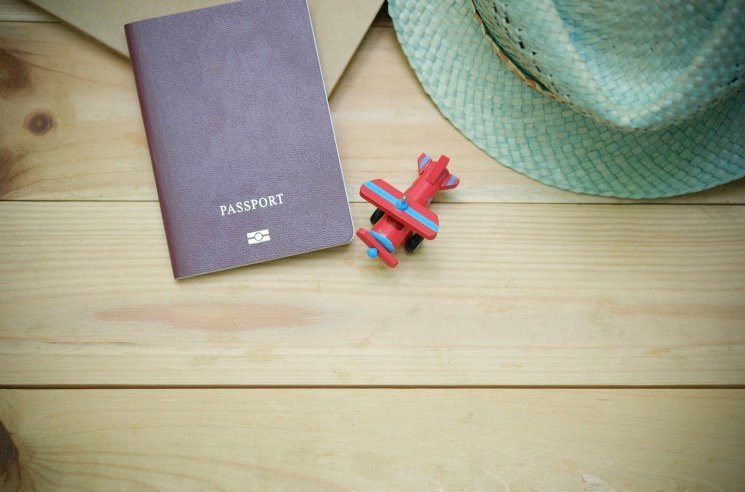A pre-departure checklist is one of the most vital tools for any boat trip. Whether you’re the owner or a guest, understanding who is responsible for this review ensures everyone’s safety and prevents problems on the water. This crucial process guarantees all equipment is working and that you are prepared for the journey. But the question remains: who is ultimately in charge of checking everything before you cast off? Let’s explore the roles everyone plays in a safe boat outing.
Why is a Pre-Departure Checklist So Important?
Skipping a pre-departure check is a risk no boater should take. This simple procedure is your first line of defense against potential mishaps and emergencies. It’s about more than just ticking boxes; it’s about building a foundation of safety for your entire trip.
A thorough review ensures that all essential safety gear is on board, accessible, and in good working condition. According to U.S. Coast Guard reports, equipment failure is a frequent contributor to boating accidents. A checklist helps you catch problems like a dead engine battery or missing life jackets before they become serious issues miles from shore.
Furthermore, this process confirms that your vessel complies with all local and federal maritime regulations. This helps you avoid hefty fines and ensures you have the proper documentation and safety equipment required by law.
The Captain’s Core Duty: Leading the Safety Check
First and foremost, the boat captain or operator holds the primary responsibility for the pre-departure checklist. As the person in command, the captain is legally and ethically accountable for the safety of everyone on board. This leadership role is non-negotiable.
The captain must be intimately familiar with the vessel and all its systems. They should lead the review process with diligence, either by checking every item themselves or by directly overseeing others who are assisting.
A captain’s personal review should always include critical safety systems. These are the items that can make a life-or-death difference in an emergency.
- Safety Equipment: Confirming the right number of life jackets for all passengers, checking the charge on fire extinguishers, and ensuring flares are not expired.
- Navigation and Communication: Testing the VHF radio, checking GPS functionality, and verifying that charts or digital navigation aids are up to date.
- Vessel Condition: A visual inspection of the hull, checking engine fluid levels, and ensuring the battery is charged and bilge pumps are working.
This hands-on approach sets the tone for the entire outing, demonstrating that safety is the top priority.
What is the Crew’s Role in Pre-Trip Preparations?
While the captain leads, crew members are vital participants in the safety check process. On many boats, the captain will delegate specific tasks to trusted and experienced crew. This teamwork makes the process more efficient and thorough.
If you are a crew member, your role is to be proactive and responsible for your assigned duties. You might be asked to check fuel and water levels, secure loose items on deck, or ensure all required documents and permits are in a waterproof container and easily accessible.
Clear communication is essential. Always confirm with the captain what you have checked and report any issues you find immediately. Never assume something is “good enough” if you have doubts. This collaborative effort strengthens the boat’s overall preparedness.
Role-Based Checklist Responsibilities
| Role | Key Pre-Departure Responsibilities |
|---|---|
| Captain | Final authority on all checks, leads the safety briefing, verifies all critical equipment. |
| Crew Member | Checks assigned systems (e.g., fuel, engine), stows gear securely, reports status to captain. |
| Guest | Pays close attention during the safety briefing, asks questions, and knows the location of safety gear. |
How Guests Can Contribute to Onboard Safety
Even if you are a guest with no boating experience, you still play a role in the vessel’s safety. While you are not responsible for performing the checklist, your awareness and attentiveness are incredibly valuable. Your main job is to listen during the pre-departure safety briefing.
The captain should show all guests essential information before leaving the dock. Pay close attention to these key points.
- The location of all life jackets (Personal Flotation Devices or PFDs) and how to put them on correctly.
- Where fire extinguishers are stored.
- How to make a distress call on the VHF radio in an emergency.
- Where to sit or stand to remain safe while the boat is in motion.
By being an observant and informed passenger, you contribute to a culture of safety. Don’t be afraid to ask questions if you are unsure about something. This helps everyone, including the captain, confirm that safety procedures are clearly understood.
Creating a Culture of Shared Responsibility on Your Boat
Ultimately, reviewing a pre-departure checklist is a shared responsibility led by the captain. While the captain has the final say, the active participation of crew and the attentive awareness of guests create a robust safety net. This collective effort ensures that potential problems are identified and resolved before the boat ever leaves the dock.
Fostering this team-oriented approach not only makes boating safer but also more enjoyable for everyone. When all on board are engaged in safety, it builds confidence and allows everyone to relax and have a great time on the water. As the old saying goes, an ounce of prevention is worth a pound of cure.
Frequently Asked Questions
Who has the final say on a boat’s pre-departure checklist?
The captain or operator of the vessel always has the final say. They bear the ultimate legal and moral responsibility for the safety of the boat and everyone on board, so their approval is required before departure.
What should I do if I’m a guest and notice a safety issue?
If you are a guest and see something that concerns you, such as a frayed rope or a missing piece of equipment, you should bring it to the captain’s attention immediately and politely. A good captain will appreciate your observation and address the issue.
How often should a boat’s safety equipment be checked?
All safety equipment should be visually inspected before every single trip as part of the pre-departure checklist. More thorough checks, such as testing electronics and servicing fire extinguishers, should be done regularly according to the manufacturer’s recommendations.
Can a digital app be used for a pre-departure checklist?
Yes, many boaters now use digital apps on a smartphone or tablet to manage their checklists. These apps can be very helpful for ensuring consistency and keeping a log, but the physical act of inspecting each item is still required.
What are the most critical items on any boat safety checklist?
The most critical items are life jackets for every person on board, functional fire extinguishers, a reliable way to communicate for help (like a VHF radio), and visual distress signals like flares. Ensuring the engine and steering systems are in good working order is also paramount.






Leave a Comment